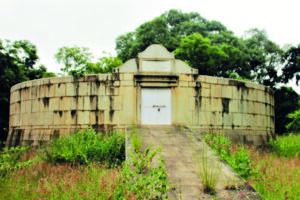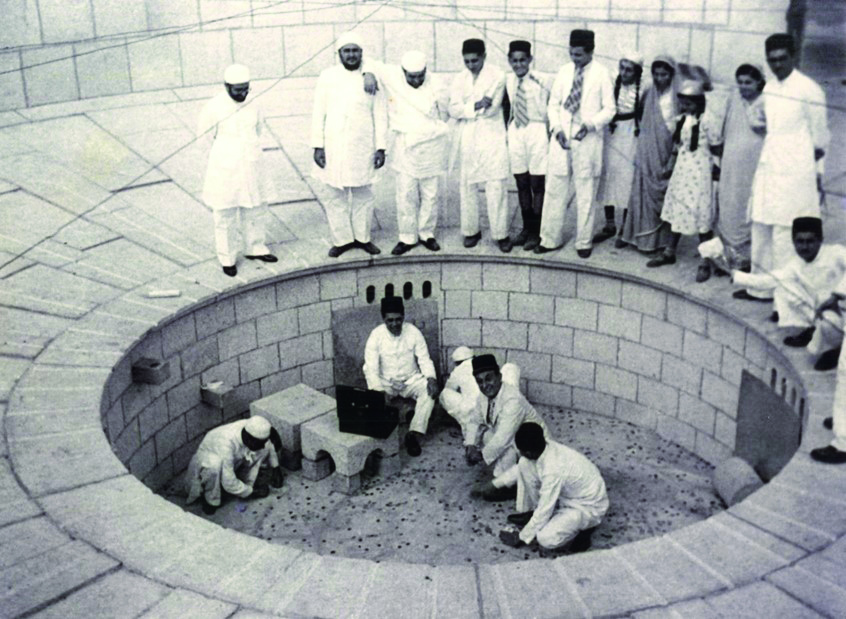Adil J. Govadia
 As per a report published in 1939, titled, ‘Bangalore-nu Dakhmu Ijwani Aaje Thaili Pavitra Kriya’, the entire fifteen acres Dokhma property located at Hebbal Village, in Bangalore, was originally purchased by Seth Ratanshah Nasserwanji Toddywalla and his siblings, and donated to the Bangalore Anjuman, in the memory of their late parents – Bai Soonabai and Seth Nasserwanji Rustomji Toddywalla. The entire Dokhma property was thus named ‘Nasserwan Baug’, after Seth Nasserwanji R. Toddywalla.
As per a report published in 1939, titled, ‘Bangalore-nu Dakhmu Ijwani Aaje Thaili Pavitra Kriya’, the entire fifteen acres Dokhma property located at Hebbal Village, in Bangalore, was originally purchased by Seth Ratanshah Nasserwanji Toddywalla and his siblings, and donated to the Bangalore Anjuman, in the memory of their late parents – Bai Soonabai and Seth Nasserwanji Rustomji Toddywalla. The entire Dokhma property was thus named ‘Nasserwan Baug’, after Seth Nasserwanji R. Toddywalla.
M/s Empress Iron & Brass Works, Bombay, graciously gifted the made-to-order, 301 nails of varying weights and sizes for the Tana ceremony, in addition to the three iron gates installed at the Dokhma. Likewise, the Tana or the cotton-wool cord, made from 101 fine strings of thread ritualistically woven together, was specifically prepared and supplied by Seth P N Mehta of Sri Ram Mills, Bombay.
Upon completion of the world’s last Dokhma in Bangalore, thousands of netizens and Government officials of different faiths thronged the construction site, to understand Parsi customs and appreciate the structural design of the magnificent edifice which was a unique architectural spectacle. While Sir Mirza Ismail, Dewan of Mysore, visited the site twice to evaluate and admire it, a few months before his demise, Maharaja Sir Krishnaraja Wodeyar also paid a royal visit to the newly constructed site, as a special invitee of the Anjuman to first-hand appreciate the Parsi method of ‘surya-daha’!
As per tradition, before the consecration of the newly built Dokhma, community members toss coins, notes and jewelry into the Bhandar (central well), signifying contribution or donation. Over Rs. 5,000/- was thus collected from the central pit and credited to the Dokhma Maintenance Fund.
Soon after, on 17th March, 1940, the elaborate process of consecrating the Bangalore Dokhma was initiated by two Yozdathregar Mobeds from Udwada – Er Noshirwan Unvalla and Er. Behramji Unwalla, brothers of the then serving Panthaky – Pestonji Unvalla. Since they were already in Bareshnum (spiritual bath), the two were exclusively transported by car from Bombay to Bangalore with complete ritualistic tarikats (religious purity), personally driven by Seth Ardeshir P. Bhandari.
Three services each of Yasna ceremonies (morning) and Vendidad (night) were performed for three consecutive days and nights by the two Yozdathregar Mobeds, in the central pit (Bhandar) of the Dokhma, followed by a Yasna ceremony on the fourth morning, honouring Dadar Ahura Mazda, followed by an Afrinagan ceremony outside the Dokhma in honour of Dadar Ahura Mazda, Spendarmad, Arda Fravash, Daham and Sarosh Yazads.
On 23rd March, 1940, (Mah Meher, Roj Behram), the five-day long consecration ceremony finally culminated with a grand Jashan and the Dokhma stood sanctified. The ‘Aalat’ used for the consecration of Bangalore Dokhma was from the 1300-year-old original legacy of the Iranshah Atash Behram, thereby ensuring the continuation of the ancient Persian silsila (permanent link with Persia).
The Jashan was attended by over a thousand community members from far and wide, including prominent religious scholars and Vada Dasturs of the era, like Dastur Ferozji Khurshedji (Udwada), Dastur Kayoji Peshtonji Mirza (Udwada), Dastur Khan Bahadur Sardar Dastur Naushirwan (Pune), Er. Hormazd Pavri (Panthaky of Nagpur and author of the magnum opus titled ‘Pav-Mahal-ni-Kriya’), amongst others. That same evening, a grand dinner was jointly hosted by Seth D. Cawasji and the three illustrious sons of late Sir Hormuzji Dinshaw – Seth Faramroz, Seth Dinshawji and Seth Nassarwanji, where over a thousand Parsis dined together celebrating the completion of the dream project originally envisioned by late Sir Hormuzji Dinshaw (Adenwalla).
The two prodigious families of Seth D. Cawasji and Sir Hormuzji Dinshaw mostly shared the cost of Dokhma construction, Tana ceremony and its consecration, while the then Panthaky Er. Pestonji J. Unvalla and his son Er. Nadirshah P. Unvalla, worked untiringly to ensure timely completion. It must be noted that when the Dokhma plan was conceptualized, the world economy was in shambles. Hitler was a dominant force and World War II was looming on the horizon. Recession had set in worldwide and the commodity prices of steel, cement, oil, petrol, building material etc., had escalated greatly.
Moreover, the Indian National Congress had called for the Swadeshi Movement, leading to non-cooperation and Satyagrah. It was under such trying and difficult circumstances that the Dokhma, Sagdi, Bungli and the compound wall were built within the short span of eleven months, at a total cost of Rs. 70,000/-. Such was the zeal and commitment of our erudite ancestors, who were unwaveringly committed to the cause of religion and traditions.
Traditionally, the first use of any new Dokhma is with the body of a Vahman (infant) or an elderly pious senior citizen. However, on 25th May, 1940, within two months of the Dokhma’s consecration, a young student from Bharuch, Noshir Doctor, studying at the Indian Institute of Science, tragically died in a motorcycle accident. Thus, on 26th May, 1940, Noshir Doctor’s was the first Ruwan to be placed in the newly consecrated Dokhma, making the new Dokhma ‘riman’ (impure). Thereafter, only the Nassessalars (corpse bearers) were allowed to enter this edifice.
